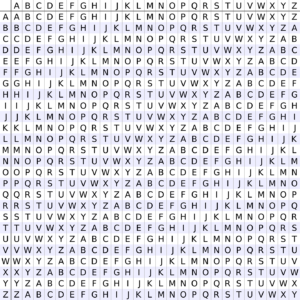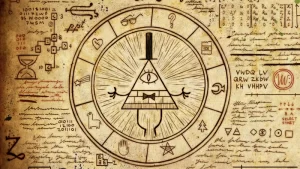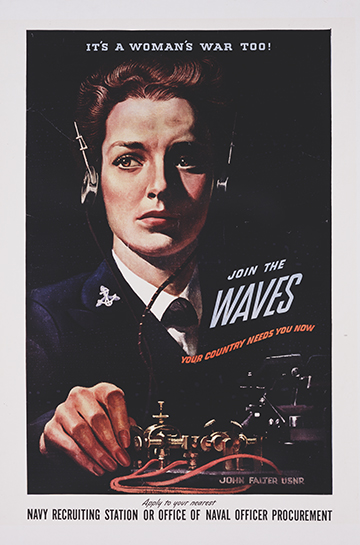
It is obvious, at the slightest glance, that this mode of instantaneous communication must inevitably become an instrument of immense power, to be wielded for good or for evil … Samuel Morse, 1838
There are only two forces that can carry light to all corners of the globe—the sun in the heavens and the Associated Press down here. I may seem to be flattering the sun, but I do not mean to do so … Mark Twain, Sept. 23, 1906
How to use Semaphore and Civil War signal flags
More info: National Park Service: The Signal Corps
How to learn Morse code
Telegraphers had to use a code within a code: The 92 code
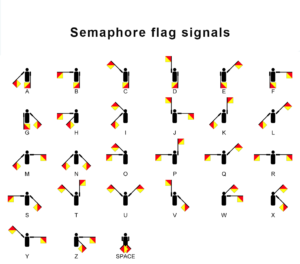 |
 |
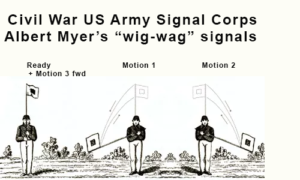 |
| A | B | C | D | E | F | G | H | I | J | K | L | M |
|---|---|---|---|---|---|---|---|---|---|---|---|---|
| 22 | 2112 | 121 | 222 | 12 | 2221 | 2211 | 122 | 1 | 1122 | 2121 | 221 | 1221 |
| N | O | P | Q | R | S | T | U | V | W | X | Y | Z |
| 11 | 21 | 1212 | 1211 | 211 | 212 | 2 | 112 | 1222 | 1121 | 2122 | 111 | 2222 |
Vigenère cipher square
Cryptography resources & Exercises
Cryptography for kids and parents https://www.gutenberg.org/cache/epub/39149/pg39149-images.html Dorothy Crain was “Director of Kindergarten” for Riverbank Geneva, Illinois, a precursor to the National Security Agency
Atbash mono-alphabetic substitution cipher Also https://en.wikipedia.org/wiki/Atbash
Polybius square https://en.wikipedia.org/wiki/Polybius_square
Caesar cipher https://en.wikipedia.org/wiki/Caesar_cipher
Bacon’s bilateral cipher https://en.wikipedia.org/wiki/Bacon%27s_cipher
Vigenère cipher https://en.wikipedia.org/wiki/Vigen%C3%A8re_cipher
Jefferson Wheeled cipher https://en.wikipedia.org/wiki/Jefferson_disk
Also wheatstone playfair cipher https://uregina.ca/~kozdron/Teaching/Regina/124Winter09/Handouts/cryptochronology2.pdf
https://en.wikipedia.org/wiki/Playfair_cipher
ADFGVX (1918) cipher
https://en.wikipedia.org/wiki/ADFGVX_cipher
Pigpen cipher https://en.wikipedia.org/wiki/Pigpen_cipher
Substitution cipher – simple to complex
https://en.wikipedia.org/wiki/Substitution_cipher
Polyalphabetic cipher https://en.wikipedia.org/wiki/Polyalphabetic_cipher
Gravity Falls cryptograms https://gravityfalls.fandom.com/wiki/List_of_cryptograms/Episodes
Electronic communication
From Ch. 7, Revolutions in Communication
Rapid communication over long distances has often been associated with divine forces, for example, in Greek and Roman mythology, with Nike, Hermes, and Mercury. For ordinary mortals, communication has historically been confined to the speed of a running horse or fast ship. History and literature are full of references to the role of messengers bringing the long-delayed news of victory or defeat. The runner from Marathon, the messenger in Shakespeare’s Henry IV, and the signal flags of Trafalgar are all among many examples of the problems with communications in pre-industrial history and culture.
Perhaps the classic example of news failing to arrive in time involves the needless loss of life at the Battle of New Orleans. When the armies of the United States and Britain fought the battle on January 8, 1815, the generals could not have known that a peace treaty had been signed on Christmas Eve, 1814. It took seven weeks for the fastest sailboat to carry the message from London to Louisiana. Yet in about fifty years, the same message would have taken less than an hour to be relayed by electronic telegraph using Morse code. The unique combination of hardware (electric wires) and software (a simple arrangement of dots and dashes) changed the world, brought down the barriers of time and distance, and opened the door to the electronic and digital mass media revolutions. No other development since printing had so many impacts in so many different walks of life.
Cycles of innovation
Innovation in communication technology often follows a cycle that can be described in three stages: open, closed, and alternative.
- The first stage of the cycle involves open experimentation, competition, and development of a new media.
- It may be followed by a second stage in which stakeholders close the technologies around profit-generating activities protected by patents. If the stakeholders are successful, they may be able to dominate the market.
- In a third stage, successful monopolies become stagnant, charging more and more money for fewer and fewer services. The downward spiral often spurred the search for circumventing technologies as alternatives to the old monopoly. Once a promising new avenue is found, the open competition starts again.
Although the cycle of open–closed–alternative technologies is a useful generalization, it doesn’t fit every media technology exactly. For example, photography was born as an open source technology, with its exact secrets revealed from the outset. In contrast, the earliest cinema companies attempted to control the industry through patents and industry associations. Although direct industry control failed, indirect content control through the Motion Picture Production Code become the norm.
Telegraphy also went through a period of open experimentation, and Samuel Morse, for one, wanted it to stay that way. Like Louis Daguerre, inventor of the first commercial photographic method, Morse also hoped that the government would own the hardware. But in the US, as over 500 telegraph companies emerged, fought, and then merged by 1866 into a national monopoly called Western Union.
Operating without regulation, Western Union and its sole media partner in the Associated Press exerted an enormous amount of control over which ideas and people would compete in the information system of the nineteenth century. One response was a US campaign for legislation to transfer the telegraph to the US Post Office, which was the structure adopted in Europe, the UK and most other countries.
When that idea failed in the US, the same campaigners who fought the telegraphic monopoly helped create the telephone system in the 1870s. Through its control of patents and market manipulation, the Bell telephone system also became a monopoly around the turn of the twentieth century. Anxious to avoid problems that had surfaced with Western Union, the US Justice Department forced AT&T to take a neutral “common carrier” position with respect to content and charges for services.
Broadcasting also began with a cycle of open innovation among scientists like Heinrich Hertz and James Clerk Maxwell, expanded with Guglielmo Marconi’s radio telegraph system, and then closed by the 1920s with AT&T and the Radio Corporation of America dominating the patents and technologies.
By the 1950s, as television technology closed, and the search for circumventing technologies would lead to satellite and cable systems by the 1980s and to digital imaging systems in the 1990s and twenty-first century.
Re-tribalization and the Global Village
Electronic communication through radio and television arrived relatively quickly, over the course of only a few decades from the late 1920s to the early 1950s. Print oriented societies that had once been organized around slower, linear forms of culture were now facing what seemed like a chaotic set of changes. Many regular people felt utterly swamped by modernity. And even Thomas Edison, George Eastman, Guglielmo Marconi, and other inventors never felt comfortable with the twentieth-century world their own inventions helped to create.
Marshall McLuhan characterized the social changes created by electronic media as a “re-tribalization” into a “global village.” Radio and television had created new “tribal” forms of art and entertainment with an emphasis on inclusiveness and nationalism. Winston Churchill’s speeches on radio, Franklin Roosevelt’s Fireside Chats, and, on the dark side, Adolf Hitler’s use of radio in the 1930s and 1940s—all of these were examples of the new tribalism and nationalism. Other examples included the way radio became the medium for rock ’n’ roll in the post-World War II era. Meanwhile, the old print culture continued to dominate politics, law, education, and commerce, with its emphasis on individuality and linear thinking. The coexistence of the two contrasting forms of society and experience were, McLuhan thought, “a formula for complete chaos” (McLuhan and Powers 1989). With society changing so quickly in McLuhan’s era, in the 1950s and 1960s, it’s easy to see why people would search for explanations.
But it turned out that the chaos wasn’t so complete. Audiences select media based on their own preferences; cultures can construct their technologies, not just react to them, if they have the freedom to do so. How they constructed these technologies, and the extent to which they are free, has been a wide-open controversy. In Ray Bradbury’s novel, Fahrenheit 451, people watched television to be part of a family and cared very little if the state banned their books. There is something of that search for community and tribalism in the way people watch streaming television today.
But that’s not the whole story. There is the possibility of participating in, and generating, our own media systems. McLuhan’s fear of chaos in the coexistence of print and electronic cultures turns out to be conservative, deterministic, and not quite in step with the twenty-first-century experience
The Telegraph as the First Electronic Network
The telegraph arrived in the mid-1840s as part of a widespread revolution in communications that included mass production of newspapers, magazines, and books, along with improvements in transportation such as canals, steamships, and railroads. The invention marks the beginning of the electronic revolution, which led to telephones, radios, and televisions. It was also one source of the digital revolution, since Morse code, based on a dot-or-dash signal, is a binary software system.
Socially, the telegraph was the first electronic network, or as historian Tom Standage said, the “Victorian Internet.” Telegrams were delivered within hours and responses could be sent right away, with an effect somewhat like an e-mail system (Standage 1998).
Politically, the Western Union telegraph system, in tandem with the Associated Press, became the first monopoly in America. In Europe, governments took over the telegraph companies to avoid the abuses of a monopoly system that were apparent in America. Meanwhile, inve
ntors worked on a way to circumvent the monopoly through a system called the telephone.
1.2 Signals over distance
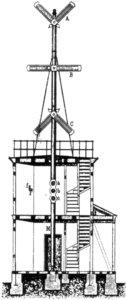
The problem of signaling over a distance is an ancient one, and some of the most complex systems have been used in military campaigns. Greek historian Thucydides described naval flag systems in the Peloponnesian War that may have been similar to those still in use today. The Roman army used a complex “box cipher,” according to historian Polybius. The cipher used a system of two torches whose positions could be used to indicate twenty-five letters, with 1-1 representing A; 1-5 representing E; and 5-5 representing Z (Kahn 1967).
The term “telegraph” was first coined for a 1792 French invention, also called the Napoleonic semaphore, by Claude Chappe. This original mechanical telegraph was a system of pivoting shutters placed atop signal towers to send coded messages. The system was used extensively by the French and British military during the Napoleonic era to carry signals from Paris and London to the fleets at naval bases along the coast.
Telegraph towers were used only by the government, but they were widely known, and the word “telegraph” quickly entered the popular lexicon. When Admiral Horatio Nelson sent a ship-to-ship message using traditional naval signal flags just before the Battle of Trafalgar in 1805, newspapers at the time said he “addressed his fleet by telegraphic communication” with the famous message: “England expects that every man will do his duty” (Times, London, December 2, 1805).
Samuel Morse and his Code: The Software of Telegraphy
It’s often said that Samuel F. B. Morse invented the telegraph. But as we have seen, there were many kinds of “telegraph” in use during the early 1800s. What Morse really invented was the software—the Morse code—that made it easy to use telegraphic devices. It was a key insight, similar to Gutenberg’s invention of moveable type, and Tim Berners-Lee’s idea for a world wide web. In these and many other cases, a rising technical capacity is held back until inventors arrive at the key insights.
What obsessed Samuel Morse about long-distance communication was not military power or the stock exchange, like other telegraphic inventors. Instead, he was motivated by his wife’s sad death in 1825 following childbirth. He was in Washington, DC, painting a portrait of the revolutionary war hero Marquis de Lafayette, and she was dying in Connecticut. The letter informing him of her death took five days to reach him. It was a cruel blow, made worse by the gap in communication (Morse 1914).
After his wife’s death, Morse spent years studying art in Europe. On a ship homeward bound in October 1832, he began talking with other passengers who were interested in electromagnetic experiments. Pacing the deck after dinner one night, he came up with the idea of sending signals through wires and sketched out his ideas in a notebook.
The idea of an artist like Morse becoming an inventor may seem far-fetched, but Morse was a Yale University chemistry graduate and came from a university tradition that saw “arts and sciences” as parallel and interrelated pursuits. Morse’s technical insight was not to overcome the mechanical problems of transmitting bursts of electricity; that had already been accomplished by many others.
Steven Gray first sent electric current 700 feet through a line in London in 1727. Benjamin Franklin in the United States was famous for his experiments with electricity. And in England, William Fothergill Cooke and Charles Wheatstone, unknown to Morse, were working on a complex telegraph sending-and-receiving system that was patented on June 12, 1837. The Cooke and Wheatstone system used five wires and a pattern of letters that could be selected or read through indicator needles on either end (Munro 1891). And in India, an inventor named William O’Shaughnessy invented an improvised telegraphic system in the 1840s.
Fortunately, Morse was not well informed about other inventors at the time, and persisted despite many obstacles. He developed a working mechanical system that was an improvement over other electrical telegraphs. And like Cooke, Morse originally tried a system of numbers for individual words and used electric signals to mark a paper tape. Morse patented his device on October 3, 1837.
Working with a collaborator, Alfred Vail, Morse continued to develop the simplified set of dots and dashes known as Morse code. To create the code, Vail and Morse puzzled over the problem of the relative frequency of letters in English. They wanted to match the simplest signals with the most frequent letters. A visit to a nearby printing firm helped solve the problem. In a typical type font, printers stocked 12,000 letter Es and 9,000 Ts, and these were assigned the simplest signal: E was one dot and T was one dash. Morse and Vail also found that the letters Q and Z were rarely used, with 400 and 200 letters in the type case, and so Morse gave them the most complex symbols: Q –.- and Z –..
Morse’s unique contribution, then, was an extremely simple way to transmit information using bursts of electricity. In effect, it was an elegant software solution to a hardware problem that others like Cooke and Wheatstone had not solved. Morse had a difficult time finding investors, but he clearly understood the significance of his invention. In a remarkably prophetic letter to Congressman Francis Smith in 1838, Morse wrote: “It is obvious, at the slightest glance, that this mode of instantaneous communication must inevitably become an instrument of immense power, to be wielded for good or for evil, as it shall be properly or improperly directed. In the hands of a company of speculators, who should monopolize it for themselves, it might be the means of enriching the corporation at the expense of the bankruptcy of thousands; and even in the hands of government alone it might become the means of working vast mischief to the Republic.”
Development of telegraphy
Morse suggested that the government buy the patent and license it to private companies, creating “a systems of checks and preventatives of abuse … to permit only the good and neutralize the evil” (Morse 1914). Between 1838 and 1842, Morse approached hundreds of potential investors in the United States and Europe. In the hope of financing more experiments on telegraphy, he attended an 1839 lecture in Paris by Louis Daguerre, and returned with the equipment and know-how to teach photography in New York. Inventors thought the idea of an electric telegraph to be more like a conjuring trick than a useful invention, let alone a profitable one. But in 1842, Congress surprised Morse when it agreed to fund an experimental line from Washington, DC, to Baltimore, Maryland. On May 1, 1844, news from a Whig party convention reached Morse’s headquarters in the capitol building an hour ahead of the train, and crowds waiting for news were jubilant, praising Morse for his invention. In a formal demonstration later that month, Morse sent the famous message: “What Hath God Wrought” (New York Times, May 1, 1894).
Meanwhile in Britain, Cooke and Wheatstone had finally managed to set up an ongoing public demonstration along a section of railway track between London and Windsor. It was a curiosity at first, but the speed with which royal announcements could be made, and the coordination of police forces in catching criminals fleeing by train, eventually convinced conservative Brits that the Cooke–Wheatstone telegraph was useful. The view was reinforced when the Royal Navy contracted a telegraph along the same route between the Admiralty in London and its main base in Portsmouth—a route once noted for the Navy’s optical telegraph.
By the fall of 1845, Morse formed the Magnetic Telegraph Co. in Washington with the help of Amos Kendall, an attorney and former press secretary for President Andrew Jackson. Cooke and Wheatstone, meanwhile, formed the Electric Telegraph Co. in London. With regular service, public enthusiasm soon replaced skepticism, and telegraph lines began doubling yearly. By 1850, in the United States, 12,000 miles of line were run by twenty different companies. At the height of the speculative fever, some 500 telegraph companies were competing.
The telegraph also took off quickly in other countries. By 1852, Britain had over 2,000 miles of line, and Germany had 1,500 miles radiating out from Berlin. France lagged because their early lead with the optical telegraph meant that they were less willing to adopt a new system (Standage 1998). Yet the French also created the first wire service: the Havas Agency. As continental America and Europe became increasingly connected, links across the ocean were attempted.
The first long undersea cable linked Paris and London in 1850, but was then damaged and replaced in 1851. The first dispatches from Britain’s war in the Crimea arrived through this system in 1853.
A much greater effort would be needed to connect the New World and the Old. In 1854, New York paper company owner Cyrus W. Field, working with Samuel Morse and others, completed the first leg of the North American portion of the
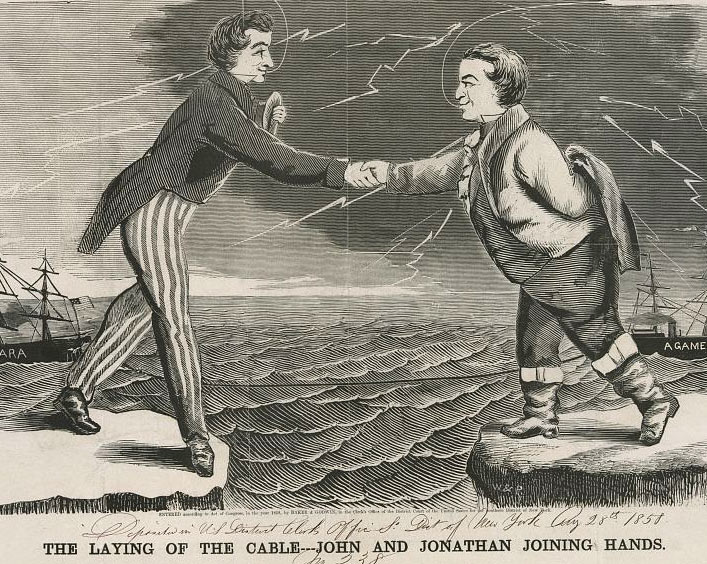
cable, from New York to Newfoundland. The next 2,000 miles across the Atlantic proved difficult, but was completed in 1858. The first trans-Atlantic cable carried a transatlantic message on August 16, 1858, and fireworks, parades, speeches, and prayers greeted the news. But twenty days later, the cable burned out and the messages stopped. Field went from national hero to laughing stock overnight, and a British board of inquiry found that the entire project had been poorly designed. Trial and error technology had led to disaster in 1858. Clearly, a new approach was needed, and the new company turned to a Glasgow mathematician and engineer William Thompson (Lord Kelvin). Similar limits to trial-and-error work would be seen in other areas, particularly radio, in later years. It took until 1866 to lay another working cable, but other submarine cables followed in rapid succession.
Development of telegraphy
The advent of the electric telegraph promised “universal interests and the worldwide victory of Christianity,” enthusiasts said. “The public mind will be stimulated to greater activity with the rapid circulation of news … The whole nation will be impressed with the same idea at the moment. One feeling and one impulse are thus created from the center of the land to the utmost extremity” (Czitrom 1983).
Enthusiasts outnumbered critics, but naturalist and writer Henry David Thoreau was one of the minority voices. Thoreau considered the telegraph little more than an “improved means to an unimproved end”:
[As] with a hundred “modern improvements”; there is an illusion about them; there is not always a positive advance … Our inventions are wont to be pretty toys, which distract our attention from serious things … We are in great haste to construct a magnetic telegraph from Maine to Texas; but Maine and Texas, it may be, have nothing important to communicate … As if the main object were to talk fast and not to talk sensibly … (Thoreau 1854)
Occasionally, other critics worried that too much had been made of the telegraph. One felt compelled to write that the telegraph “can neither rescue a man from sin nor transport him to heaven” (New York Times, August 24, 1858). Another said the telegraph was “superficial, sudden, unsifted, too fast for the truth” (Lafrance 2014). The telegraph did more than ease the spread of information. Like any communications revolution, it made new functions of communication possible. “Telegraphy gave rise to
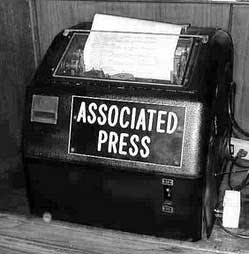
both the modern conception of news and methods of news gathering,” said historian Daniel Czitrom. Before the telegraph, colonial newspapers printed news as it arrived in the mail, or by word of mouth, seldom seeking out news. Timeliness was secondary to record keeping. For instance, the pre-telegraphic Niles Weekly Register’s motto was, “The present and the past, for the future.”
After the telegraph, the emphasis tended to be on timeliness and on standardization of information rather that storytelling, especially for news transmitted via telegraph by wire services like the Associated Press (AP). The AP dispatches were “more free from editorial comment than most reporting for single newspapers” (Schudson 1978). The model of AP reporting was, according to the AP’s Kent Cooper, “the finest moral concept ever developed in America and given the world … that news must be truthful and unbiased” (Siebert 1963). But the ideal of unbiased news took root slowly among the newspapers that depended on the AP, according to historian Michael Schudson. While Russell exemplified the finest moments of early English journalism in his letters to The Times from the Crimean War, the effect of the telegraph was to reduce the value of the individual war correspondent and their lengthy dispatches sent from the front.
The wire service’s condensed style became a journalistic gold standard, emphasizing facts over opinion. The short, punchy style of writing was lionized by writers such as Ernest Hemingway, for example, who called it “telegraphese” (Baker 1972). Nor did the new medium guarantee that the news would be truthful and unbiased, as AP often claimed. In fact, the AP’s hand-in-hand monopoly with Western Union proved controversial for nearly a century.
MORE INFO
Steganographia by Johannes Trithemius, Library of Congress rare book collection, 1620
The Telegraph and the press (paper by Prof. Kovarik, July 2023).
Morse code is way more interesting than you think , Medium . com
Rosetta stone https://www.youtube.com/watch?v=orU-w2TXsBU
Materials lists: Signal flags, Morse code keys (in progress)

